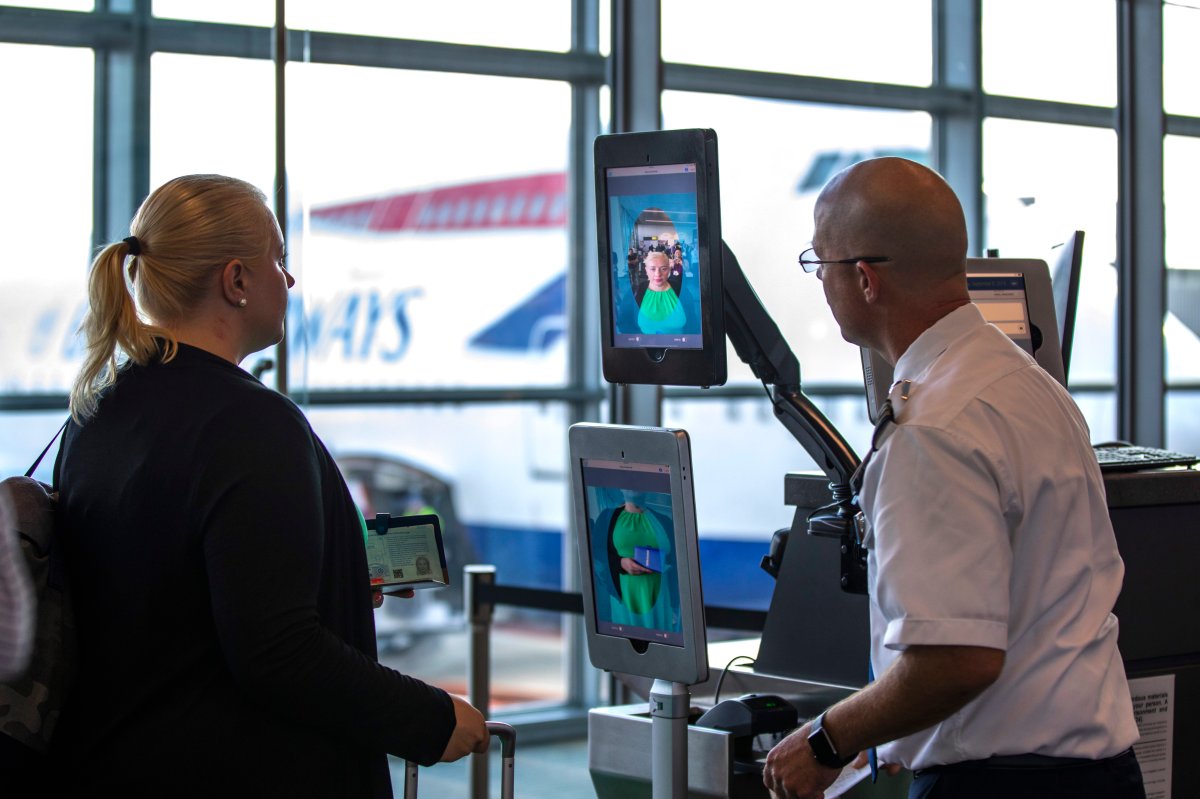If you’re travelling by plane in the United States any time soon, you may come across facial recognition technology to check in, drop off a bag, go through security and board your flight.

U.S. Customs and Border Protection (CPB) has been using the technology to screen non-U.S. residents on international flights for a few years. But now the Transport Security Administration (TSA) is partnering with the CPB and rolling out facial recognition on domestic flights, too.
TSA said by using facial recognition technology, it hopes to speed up travel time for passengers and reduce the need for documents like passports and flight tickets.
Currently, the TSA mainly relies on visually identifying travellers and verifying passports — but retina scan and fingerprint matching are slowly creeping into more U.S. airports. And now there are the facial scans.
WATCH: Facial recognition software privacy concerns

“It’s convenient, secure and efficient,” John Wagner, deputy executive assistant commissioner at U.S. Customs and Border Protection’s office of field operations told the Denver Post. “We just have to find better ways than lining everyone up and manually reviewing (documents).”
Later this month, Delta Air Lines and the TSA are launching the first facial recognition terminal at Atlanta’s international airport that uses the technology to speed up the travel process by automating flight check-in, bag drop, ID verification and boarding a flight.
Technology already caught an imposter
It seems like the technology is already working.
In August, facial recognition at an airport near Washington, D.C., helped catch a man attempting to enter the U.S. with false documents, according to U.S. Customs and Border Protection.
A man travelling from São Paulo, Brazil, used a French passport as his identification at the Washington Dulles International Airport. But the facial recognition system flagged the man’s face as not matching the passport photo. Officers then searched the man and he grew “visibly nervous,” according to the CPB. Officers then found a Republic of Congo identification card concealed in his shoe.
The facial recognition technology at Dulles Airport (where the man was caught) uses iPads at departure gates. This is how it works: a passenger gets his or her face scanned, then the image is compared with a gallery of photos pulled from the U.S. Department of Homeland Security, including passport or visa photos of all travellers on the flight.
If the images match, the screen flashes green, and the person is allowed to board the flight. If the screen flashes red then the person may be pulled aside for additional screening.
WATCH: Calgary police using facial recognition software despite privacy watchdog’s concerns
Privacy concerns
According to the Denver Post, privacy advocates and civil libertarians are concerned about the devices’ accuracy and potential misuse of the information they collect.
“Right now, there is very little federal law that provides any type of protections or limitations with respect to the use of biometrics in general and the use of facial recognition in particular,” Jeramie Scott, national security counsel for the Electronic Privacy Information Center said, which has filed Freedom of Information Act requests seeking details about the program.
The American Civil Liberties Union (ACLU) has also criticized the technology citing discrimination and false matches.
“Facial recognition software is easily tripped up by changes in hairstyle or facial hair, by aging, weight gain or loss, and by simple disguises,” the ACLU said in a statement.
But the TSA does not agree and said it believes travellers will embrace the idea because of its “convenience.”
“Travelers increasingly use biometrics, such as fingerprint and facial recognition, in their daily lives to access their mobile devices, apps, and accounts. As biometric usage continues to spread throughout the consumer market, popular perceptions have evolved to appreciate the convenience and security biometric solutions can offer in the commercial aviation sector,” the TSA said in a report.
It also believes there is a demand for self-serve options that “minimize direct interaction with government and airline personnel.”
China airport automates check-in with facial recognition
China is also using facial recognition in its airports, raising privacy concerns as Beijing pushes to become a global leader in the field.
Shanghai’s Hongqiao airport uses self-service kiosks for flight and baggage check-in, security clearance and boarding powered by facial recognition technology, according to the Civil Aviation Administration of China.
Many airports in China already use facial recognition to help speed security checks, but Shanghai’s system, which debuted Monday, is being billed as the first to be fully automated.
WATCH: Chinese cities use water spray, facial recognition technology to stop jaywalkers

— With files from the Associated Press




Comments